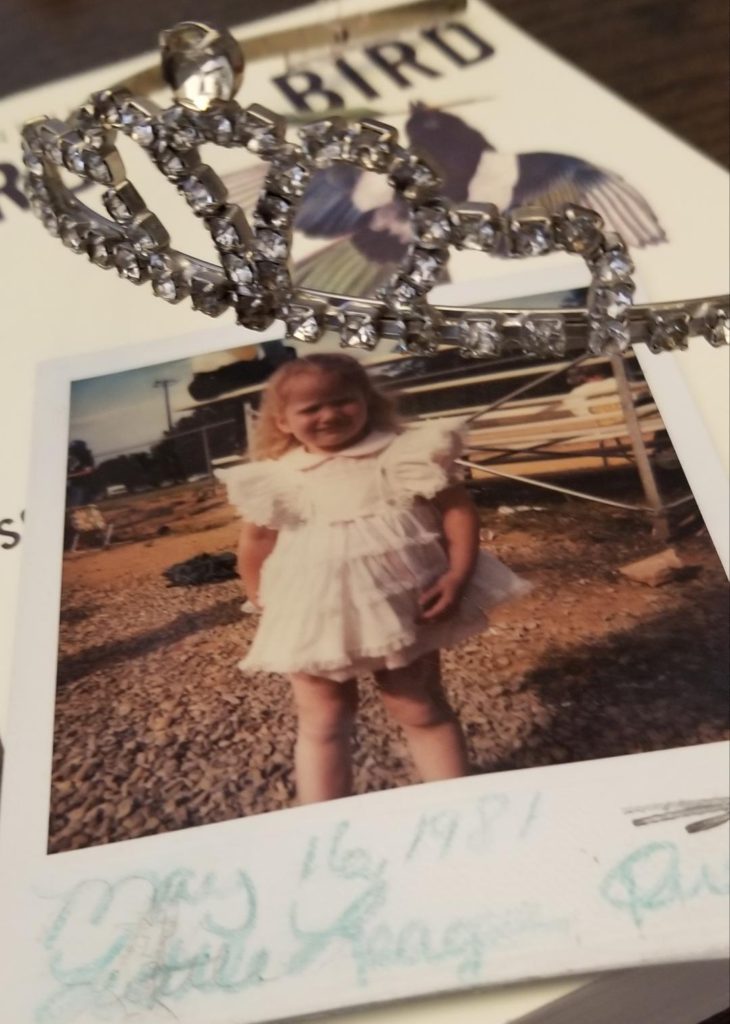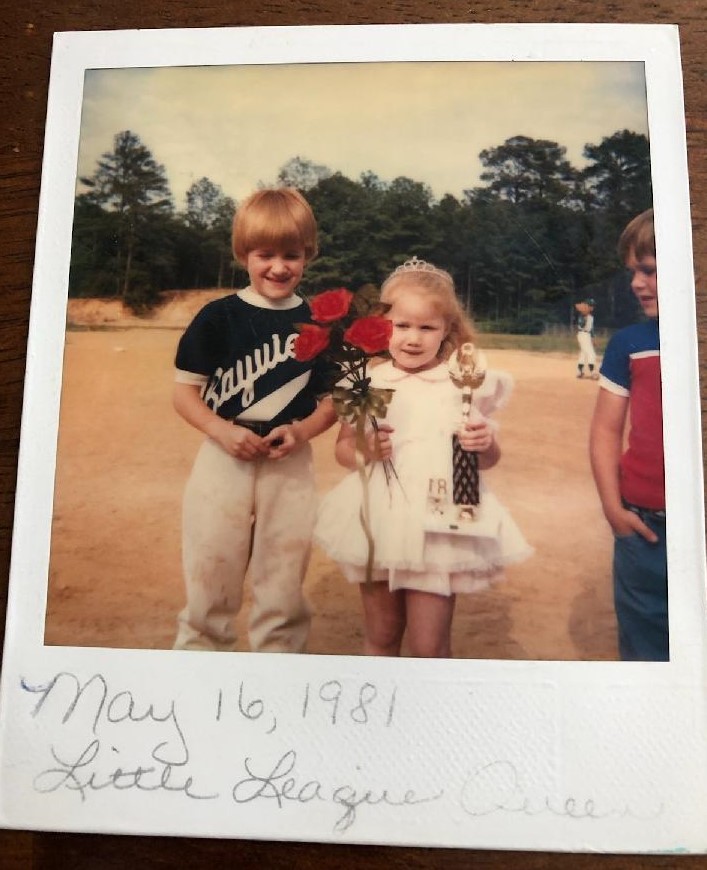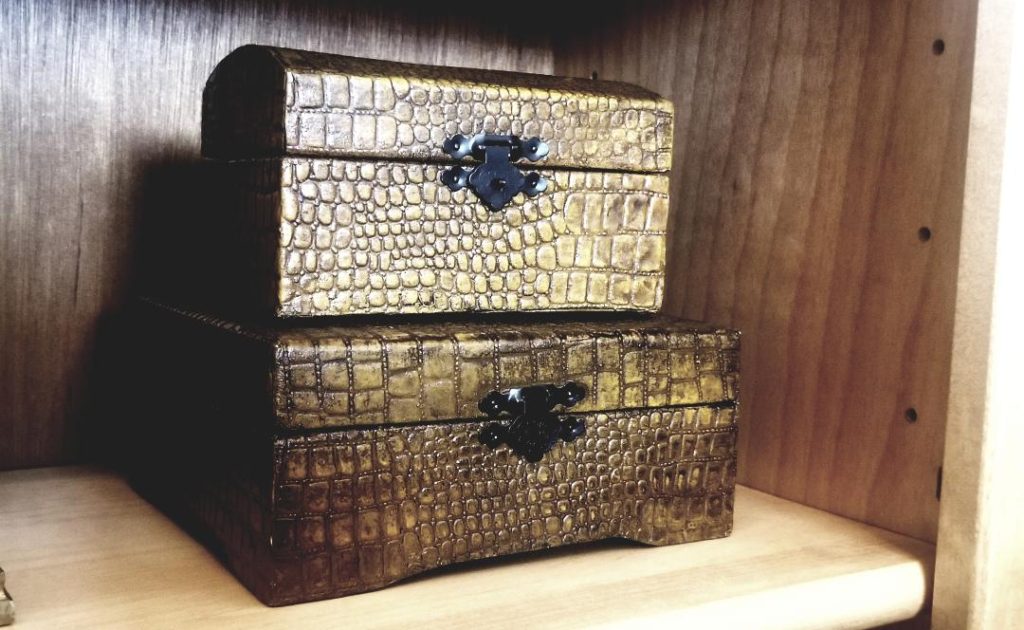A tiara on our kitchen table caught my daughter Lily’s attention, a random piece of pretend royalty I’d discovered in a drawer full of phone chargers and miscellaneous cords.
“What’s that?” Lily asked.
“Well,” I started. “That’s a tiara I wore a long time ago.”

Years have dulled the diadem’s shine. One of the combs designed to keep the crown in place is missing. The rhinestones, which once sparkled in the springtime sun, are now more gray than grand.
May 16, 1981.
I don’t remember the day – I was just shy of 4 years old – but pictures and my mom’s handwriting capture it clearly. The tiara, along with a trophy and roses, was my reward as I took the title of, ahem, Little League Queen. Appropriately, I’m standing in the dirt of a baseball diamond. My big brother is next to me wearing his uniform and ready to play or, by the looks of his pants, ready to play again.

Bayview Ballpark was the stage for a lot of my childhood memories. Lily’s question rekindled a few: t-ball games, concession stand corndogs, and a tall, silver, metal slide that scorched our legs when we sailed its length on hot summer days. Lily has a few stories of her own from the playground, though many years removed from mine.
The field is mostly silent now. No one’s played ball there in decades. But the park comes to life for me when I pass it by, whether on the road or in my mind.
Or when my daughter says, “What’s that?”
I don’t know about you, but I don’t always appreciate my kids’ curiosity. As a busy mom I become overwhelmed, even annoyed, when they ask a lot of questions. I hurry an answer, which is usually “We’ll see”, and move on to the next task on my to-do list. I frown on their questions as an imposition when what they really are is an invitation.
To listen.
To learn.
To lean in.
Week 2 of Illustrated Ministry’s “An Illustrated Lent for Families” talks about curiosity. I mentioned this resource in my last writing, and we continue to enjoy it.
I’ve never considered Jesus as a curious boy or that Mary and Joseph may have found him precocious. Luke chapter 2 gives a glimpse of this through the story of Jesus becoming separated from his parents during the feast of the Passover in Jerusalem. When the family finally reunited, the first thing they did was ask questions. Mary wanted to know why Jesus would make them worry. Jesus asked why they were surprised to find him in the temple. (He was curious there, too.)
My emotions would have flared in this moment – relief, anger, joy. But look at what the Bible says about Mary’s response to the situation. It’s a worthy lesson in parenting.
“… but his mother treasured all these sayings in her heart.” (Luke 2:51)
Does that verse sound familiar to you? It struck me as I read it during our family devotion, and I quickly connected it to an earlier narration of Mary after Jesus’ birth.
“… but Mary kept all these things and pondered them in her heart.” (Luke 2:19)
She treasured.
She pondered.
She stored up memories.
Our best memories – the ones we will treasure, ponder and store – may be just one question away. Think about ways you can encourage curiosity with your family. What can you bring into your home to connect you to your kids and them to you?
I haven’t worn a tiara since my reign as Little League Queen at Bayview Ballpark in 1981. My headpiece from our wedding day in 2006 comes close. It’s wrapped in tissue paper and tucked inside a storage chest in our living room, just waiting for Lily to open and ask, “What’s that?”
When she does, I’ll indulge her curiosity with care and take my time telling that story, because it is the beginning of her own.
“When his parents saw him, they were astonished. His mother said to him, ‘Son, why have you treated us like this? Your father and I have been anxiously searching for you.’
‘Why were you searching for me?’ he asked. ‘Didn’t you know I had to be in my Father’s house?’
But they did not understand what he was saying to them. Then he went down to Nazareth with them and was obedient to them. But his mother treasured all these things in her heart. And Jesus grew in wisdom and stature, and in favor with God and man.”
(Luke 2: 48-52)
Here are a few ideas if you feel stuck or unsure about how to be curious with your kids:
- Spring Break and summer vacations are a fun time to talk about travel. Buy a map from the dollar store and hang it in your house. Plot the places you would like to visit.
- Host a family Show and Tell. Each person can pick three things that have a special meaning. Tell a story about the items you chose.
- Play “Fun Facts” at the dinner table. See how well you know each other by guessing each other’s favorite song, movie, book, etc. Then ask why those things are favorites.

